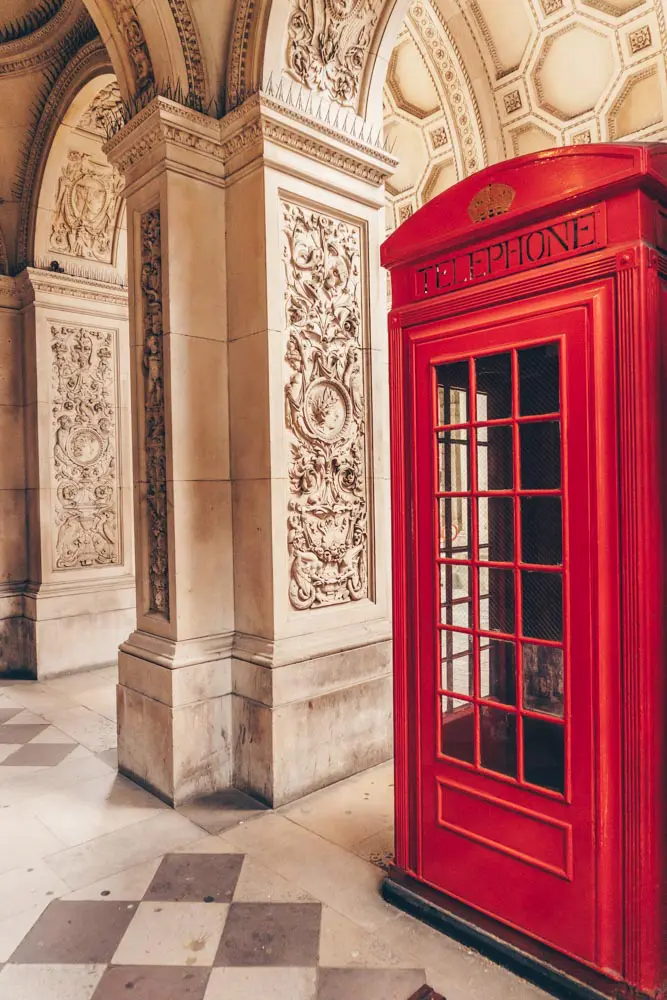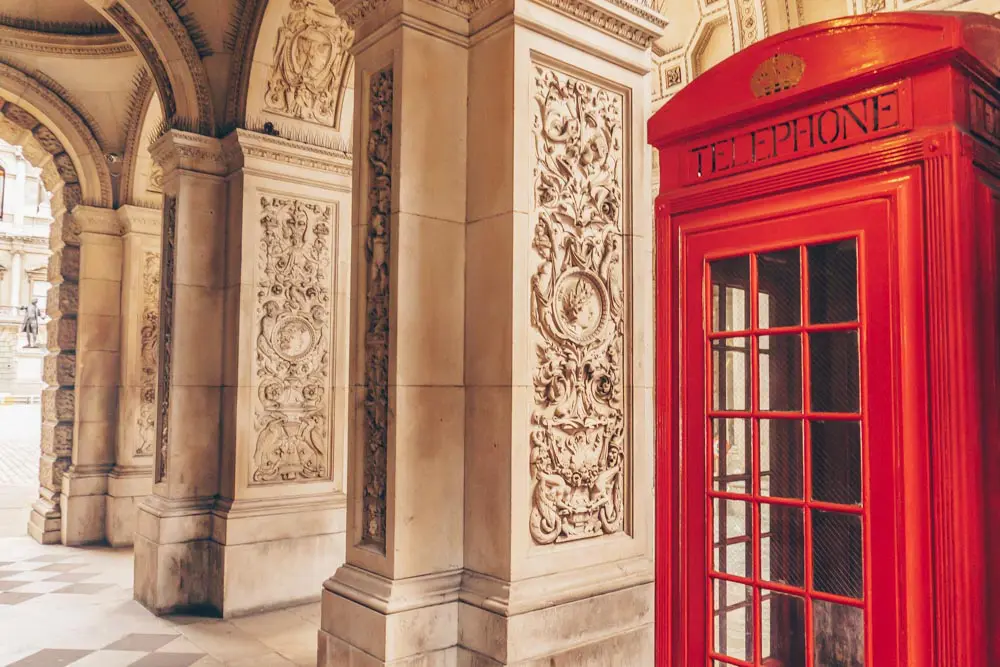Few iconic designs shout London as much as the K2 Telephone Boxes.
Created to replace the unpopular Kiosk No 1 (K1) boxes commissioned by the General Post Office in 1921, Sir Giles Gilbert Scott’s iconic design was submitted to and the eventual winner of a competition held by the Royal Fine Arts Commission in 1924.
Surprisingly few of the K2 design bright red boxes remain in the city today, yet these boxes just inside the entrance of Burlington House in Mayfair are even more special than usual…

These are Gilbert Scott’s original prototypes – one wooden, one cast iron that together are the smallest listed buildings in London.
Gilbert Scott’s Design of the K2 Telephone Box
Gilbert Scott, who also designed the Battersea Power Station, Cambridge University Library and Lady Margaret Hall in Oxford, took inspiration for the classic design from the tomb Sir John Soane created for his late wife in the graveyard of St Pancras Old Church.
Seeing the neoclassical lines and elegant structure found in Soane’s design, he applied it to the kiosk with spectacular success.
The kiosks had a domed roof, decorated with a cleverly perforated crown to allow air circulation and latticed glass panels on three sides.

Red might be the colour forever associated with these telephone boxes, but Scott’s design actually proposed that they be painted silver with a blue interior. The General Post Office rejected this idea, opting instead for the iconic red we’ve come to know so well.
Approximately 1,700 K2 telephone boxes were installed across London: the first in 1926. Interestingly, there aren’t many Kiosk Twos outside of London because the cast iron construction made them very difficult to transport over long distances.
The Post Office asked Scott to create a revised design to allow them to be rolled out across other regions. Subsequent iterations including the concrete K3, and much lighter K6 (many more of which have survived to the present day) were installed throughout the country.
After the upgrade on the K2 model, many of London’s original 1700 K2s have been taken away or scrapped. Today there are only 200 K2s around the capital. While that number may continue to shrink, we’re in no doubt these two phone boxes are here to stay.
A Word on the Scotts
The man behind the iconic phone box probably deserves a bit of unpacking. He’s got a bit of an interesting family. Scott came from a family of architects that stretched back generations. His father and his grandfather were both called George Gilbert Scott, and both had esteemed careers as architects too.
What’s cool about this multigenerational fascination with building design is that each of the three men was successful enough to have an impact on the style of the day, and each man chose his own distinct style.
G.G. Scott Senior was a practitioner of the Gothic Revival, chiefly designing churches and (wince) workhouses. Perhaps the most notable of his works is St Pancras Train Station. That is if you ignore the fact he also designed the Albert Memorial.
G.G. Scott Junior worked in gothic too, but was mainly into the Queen Anne Revival style. His works include Christ’s, Pembroke and Peterhouse colleges at the University of Cambridge and much of Dulwich College’s main building.
In a bizarre twist of fate, Scott Junior would die in the Midland Hotel, the hotel of St Pancras Station – a building his father designed.
K2 Telephone Box Prototypes: Practical Information and Map
- You’ll find the phone boxes tucked behind the pillars and gates at the entrance to Burlington House, also the home of The Royal Academy of Arts. There’s one box on either side of the thoroughfare.
- You might be able to catch a glimpse of the boxes through the locked gates of the Royal Academy of Arts, but to get up close you’ll need to visit during the institution’s opening hours. You can see those below.
Address: Burlington House, Piccadilly, W1J 0BA
Opening times: Monday: closed, Tuesday – Sunday: 10am – 6pm, Friday: 10am – 9pm
